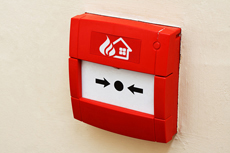 According to Justin Siller, manager of the security and building technologies group at IHS, despite traditionally being slow to use new technologies, it is believed that the fire market is starting to see increased interest in wireless and IP (Internet Protocol)-enabled products.
According to Justin Siller, manager of the security and building technologies group at IHS, despite traditionally being slow to use new technologies, it is believed that the fire market is starting to see increased interest in wireless and IP (Internet Protocol)-enabled products.
Wireless products have typically been used in specific applications where wiring is difficult such as historical buildings, but outside of this the market has been virtually non-existent. Barriers such as reliability, price, variations in frequencies and installer reluctance have slowed adoption. However, wireless is starting now to be embraced.
This is particularly true in the United Kingdom (UK) and Nordic countries. IHS now estimates some 25% of sales of wireless products in Europe are taking place in the UK. End-users are now willing to spend a bit more upfront for the product, in exchange for lower installation costs since wiring is not necessary.
The main barrier to mass-market adoption is the integrator/installer channel. Installers continue to be reluctant to market wireless products because they would need to complete more installations to make the same amount of money as they do with wired installations. So while end-users see benefits, installers struggle to see any advantages.
For IP, increasing demand to integrate multiple building systems is driving acceptance. Large facilities, centrally managed chains and campus-style buildings want to connect multiple building systems together to gather higher levels of data on a single platform. Surprisingly, most demand for these solutions is coming from the Middle East and Southeast Asia where legislation is more lax on integration standards. Here buildings are integrating fire equipment with building management, security, and lighting equipment to improve operational efficiencies and have fewer people reviewing/monitoring the information. It is expected to not only increase adoption for networked addressable panels but should also increase use of more sophisticated communication channels such as IP and Modbus.
Demand for these technologies is expected to remain modest in the short-term. However, as other building technologies such as access control, video surveillance, intruder alarms, building automation, elevators, and visitor management systems move to use wireless and IP-ready products, and be integrated, the fire industry may be hard-pressed not to follow-suit.

